د "اسټرالیا" د بڼو تر مېنځ توپير
و r2.7.1) (robot Adding: rn:Australiya |
و r2.6.4) (robot Adding: rw:Ositaraliya |
||
| ۴۰۸ کرښه: | ۴۰۸ کرښه: | ||
[[roa-rup:Australia]] |
[[roa-rup:Australia]] |
||
[[ru:Австралия]] |
[[ru:Австралия]] |
||
[[rw:Ositaraliya]] |
|||
[[sa:आस्ट्रेलिया]] |
[[sa:आस्ट्रेलिया]] |
||
[[sah:Аустралиа]] |
[[sah:Аустралиа]] |
||
د ۲۲:۰۰, ۷ جنوري ۲۰۱۱ بڼه
| Commonwealth of Australia آسټراليا |
||||||
|---|---|---|---|---|---|---|
|
||||||
| ترانه: Advance Australia Fair[۱] |
||||||
 موقعيت
|
||||||
| پلازمېنه | کانبېرا | |||||
| لوی ښار | سېډني | |||||
| وګړنوم | Australian, Aussie[۱][۲] (colloquial) |
|||||
| حکومت | فېدرالي پارلماني ډېموکراسي او constitutional monarchy, د آسټراليا حکومت هم وګورۍ | |||||
| - | Governor-General | Quentin Bryce | ||||
| - | Prime Minister | Kevin Rudd | ||||
| جوړښت | ||||||
| - | Constitution | 1 January 1901 | ||||
| - | Statute of Westminster | 11 December 1931 | ||||
| - | Statute of Westminster Adoption Act | 9 October 1942 (with effect from 3 September 1939) | ||||
| - | Australia Act | 3 March 1986 | ||||
| ارتوالی | ||||||
| - | ټولټال | ۷٬۶۱۷٬۹۳۰ کيلومتر2 (6th) ۲٬۹۴۱٬۲۹۹ sq mi |
||||
| د وګړو شمېر | ||||||
| - | 2006 census | 19,855,288[۳] | ||||
| نا خالص داخلي تولید (PPP) | 2008 اټکل | |||||
| - | ټولټال | $799.054 billion[۴] (18th) | ||||
| - | پر کس | $36,918[۴] (15th) | ||||
| GDP (nominal) | 2008 اټکل | |||||
| - | ټولټال | $1.013 trillion[۴] (14th) | ||||
| - | پر کس | $46,824[۴] (13th) | ||||
| بشري پرمختيا (2007) | ▲ 0.970[۵] (very high) (2nd) | |||||
| د وخت سيمه | various[۲] (UTC+8 to +10.5) | |||||
| - | اوړی (DST) | various[۳] (UTC+8 to +11.5) | ||||
| د موټر چلولو لوری | left | |||||
| د انټرنټ مخکښ شپول | .au | |||||
| پيل ګڼ | +61 | |||||
د آسټراليا همګټی هېواد په سوېلي نيم کره کې پروت دی. دا د نړۍ تر ټولو وړوکی براعظم دی چې د هند په سمندر کې او په آرام سمندر کې ګڼ شمېر ټاپوان لري. د آسټراليا سهېلي ګاونډي هېوادونه انډونېزيا، ختيځ تيمور، پاپا نيو ګونې دي، په سهېل ختيځه خوا کې يې سلېماني ټاپوان، ونواتو او په فرانسې پورې تړلې نوی کالېدونيا پراته دي او په سوېل ختيځه لورې يې د نوي زيلاند هېواد پروت دی.
د ۴۰۰۰۰ کالونو راپدې خوا پدې لويه وچه کې بومي انسانان مېشت دي. په ۱۷ مه پېړۍ کې د سهېل له لورې د کب نيونکو او د اروپايي سپړونکو او سوداګرو د کله نا کله ليدنې وروسته په ۱۷۷۰ زېږيز کال کې د برطانيې حکومت ددغې وچې نيمه ختيځه سيمه د خپل په دولت کې ورګډه کړه، او په رسمي توګه يې په ۲۶ د جنوري، ۱۷۸۸ زېږيز کال کې د نوي وېلز د پېنل کالونۍ ترنامه په دې سيمه کې مېشت شوه.
څنګه چې د وګړو شمېر مخ په ډېرېدو وه او نوي ځايونه هم موندل کېدل، نو تر ۱۹ مې پېړۍ پورې برطانيې د هېواد نه دباندې په دغې لويې وچې پينځه نورې سلطنتي مستعمرې په کاميابۍ سره جوړې کړې.
په 1 د جنوري 1901, شپږ کالونۍ سره يوځای شوې او همګټې آسټراليا يې جوړه کړه. د اتحاديې د جوړېدو وروسته، آسټراليا د يوه باثباته لېبرال ډيموکراټيک سياسي نظام خپل کړی او تر دم مهال د همګټې دولتونو غړی هېواد دی. آسټراليا نژدې 20.4 ميليونه وګړي لري چې د همدغو وګړو ډېره برخه په ساحلي ښارونو لکه سيډني، مېلبورن، برېزبېن، پرت، او آډېلايډ کې مېشت دي.
آرپوهه
د Australia نوم د لاطيني کلمې australis نه راوتلی چې د سوېل يا جنوب مانا لري. په تاريخي لاسوندونو کې د "سوېل ناپېژندلې سيمه" يا (terra australis incognita) هغه افسانه ده چې د آسټراليس نوم پکې راڅرګند شوی. د دې افسانې نېټه د روم د سلطنت وخت ته ورګرځي او د منځني پېر په جغرافيه کې يو عام ځای ګڼل کېده، خو د يوې ځانته وچې په اړه د بنسټيزو مالوماتو په توګه دا نوم نه ؤ رابرسېره شوی. د هالنډي ژبې صفتي نوم Australische ("آسټراليايي", چې د "سوېلي" په مفهوم کارېدلی) د هالنډي چارواکو لخوا په باټاويا کې کارېدلی چې د همدې نوم اشاره هغې وچې لور ته شوې چې په ۱۶۳۸ ز. کال کې سوېلي لور ته نوې موندل شوې وه. د لومړي ځل لپاره په انګرېزي د "Australia" لغت، په 1693 ز. کال کې د Les Aventures de Jacques Sadeur dans la Découverte et le Voyage de la Terre Australe په ژباړه کې راښکاره شوی، دا د 1692 ز. کال د يوه فرانسوي ناول دی چې ليکوال يې Gabriel de Foigny دی او د همدې ليکوال قلمي نوم جېکس ساديور [۴] ؤ. الېکساندر دالرېمپل بيا په ۱۷۷۱ ز. کال کې همدا نوم د خپل اثر An Historical Collection of Voyages and Discoveries in the South Pacific Ocean (په سوېلي آرام سمندر کې د سمندري سفرونو او موندنو يوه تاريخي ټولګه)، کې وکاراوه. نوموړي همدا اصطلاح، په ځانګړي توګه د آسټراليا لپاره نه بلکه، د آرام سمندر ټولې سوېلي سيمې لپاره کارولی. په 1793, جيورج شا او سر جېمز سمېت خپل اثر Zoology and Botany of New Holland خپور کړ چې په همدې اثر کې داسې ليکلي ؤ "the vast island, or rather continent, of Australia, Australasia or New Holland" ("د يوه ستر ټاپو، يا د آسټراليا، آسټرال آسيا او يا هم نوي هالنډ د لويه وچه).

د "آسټراليا" نوم په ۱۸۱۴ ز. کال کې د ماتيو فلېندرز ماڼو د کتاب A Voyage to Terra Australis (تېرا آسټراليا ته سفر) د خپرېدو وروسته مشهوره شو. Despite its title, which reflected the view of the Admiralty, Flinders used the word "Australia" in the book, which was widely read and gave the term general currency. Governor Lachlan Macquarie of New South Wales subsequently used the word in his dispatches to England. In 1817 he recommended that it be officially adopted. In 1824, the British Admiralty agreed that the continent should be known officially as Australia.
The word "Australia" in Australian English is pronounced as either /ə.ˈstɹæɪ.ljə/, /ə.ˈstɹæɪ.liː.ə/ or /ə.ˈstɹæɪ.jə/.
تاريخ
- آرنۍ ليکنه: History of Australia
The first human habitation of Australia is estimated to have occurred between 42,000 and 48,000 years ago.[۵] The first Australians were the ancestors of the current Indigenous Australians; they arrived via land bridges and short sea-crossings from present-day Southeast Asia. Most of these people were hunter-gatherers, with a complex oral culture and spiritual values based on reverence for the land and a belief in the Dreamtime. The Torres Strait Islanders, ethnically Melanesian, inhabited the Torres Strait Islands and parts of far-north Queensland; they possess distinct cultural practices from the Aborigines.
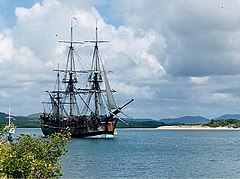
The first undisputed recorded European sighting of the Australian continent was made by the Dutch navigator Willem Jansz, who sighted the coast of Cape York Peninsula in 1606. During the 17th century, the Dutch charted the whole of the western and northern coastlines of what they called New Holland, but made no attempt at settlement. In 1770, James Cook sailed along and mapped the east coast of Australia, which he named New South Wales and claimed for Britain. The expedition's discoveries provided impetus for the establishment of a penal colony there following the loss of the American colonies that had previously filled that role.
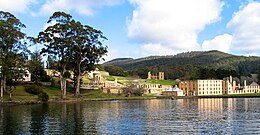
The British Crown Colony of New South Wales started with the establishment of a settlement at Port Jackson by Captain Arthur Phillip on 26 January 1788. This date was later to become Australia's national day, Australia Day. Van Diemen's Land, now known as Tasmania, was settled in 1803 and became a separate colony in 1825. The United Kingdom formally claimed the western part of Australia in 1829. Separate colonies were created from parts of New South Wales: South Australia in 1836, Victoria in 1851, and Queensland in 1859. The Northern Territory (NT) was founded in 1863 as part of the Province of South Australia. Victoria and South Australia were founded as "free colonies" — that is, they were never penal colonies, although the former did receive some convicts from Tasmania. Western Australia was also founded "free", but later accepted transported convicts due to an acute labour shortage. The transportation of convicts to Australia was phased out between 1840 and 1868.
The Indigenous Australian population, estimated at about 350,000 at the time of European settlement,[۶] declined steeply for 150 years following settlement, mainly because of infectious disease, forced migration, the removal of children, and other colonial government policies that some historians and Indigenous Australians have argued could be considered to constitute genocide by today's understanding.[۷] Such interpretations of Aboriginal history are disputed by some as being exaggerated or fabricated for political or ideological reasons.[۸] [۹] This debate is known within Australia as the History Wars. Following the 1967 referendum, the Federal government gained the power to implement policies and make laws with respect to Aborigines. Traditional ownership of land — native title — was not recognised until the High Court case Mabo v Queensland (No 2) overturned the notion of Australia as terra nullius at the time of European occupation.
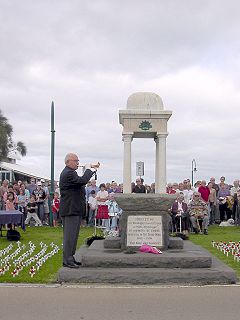
A gold rush began in Australia in the early 1850s, and the Eureka Stockade rebellion in 1854 was an early expression of nationalist sentiment. Between 1855 and 1890, the six colonies individually gained responsible government, managing most of their own affairs while remaining part of the British Empire. The Colonial Office in London retained control of some matters, notably foreign affairs, defence and international shipping. On 1 January 1901, federation of the colonies was achieved after a decade of planning, consultation and voting, and the Commonwealth of Australia was born, as a Dominion of the British Empire. The Australian Capital Territory (ACT) was formed from New South Wales in 1911 to provide a location for the proposed new federal capital of Canberra (Melbourne was the capital from 1901 to 1927). The Northern Territory was transferred from the control of the South Australian government to the Commonwealth in 1911. Australia willingly participated in World War I;[۱۰] many Australians regard the defeat of the Australian and New Zealand Army Corps (ANZACs) at Gallipoli as the birth of the nation — its first major military action. Much like Gallipoli, the Kokoda Track Campaign is regarded by many as a nation-defining battle from World War II.
The Statute of Westminster 1931 formally ended most of the constitutional links between Australia and the United Kingdom, but Australia did not adopt the Statute until 1942. The shock of the United Kingdom's defeat in Asia in 1942 and the threat of Japanese invasion caused Australia to turn to the United States as a new ally and protector. Since 1951, Australia has been a formal military ally of the US under the auspices of the ANZUS treaty. After World War II, Australia encouraged mass immigration from Europe; since the 1970s and the abolition of the White Australia policy, immigration from Asia and other parts of the world was also encouraged. As a result, Australia's demography, culture and image of itself were radically transformed. The final constitutional ties between Australia and the United Kingdom ended in 1986 with the passing of the Australia Act 1986, ending any British role in the Australian States, and ending judicial appeals to the UK Privy Council. Australian voters rejected a move to become a republic in 1999 by a 55% majority,[۱۱] but the result is generally viewed in terms of dissatisfaction with the specifics of the proposed republican model rather than attachment to the monarchy. Since the election of the Whitlam Government in 1972, there has been an increasing focus on the nation's future as a part of the Asia-Pacific region.
سياست
Main articles: Government of Australia and Politics of Australia

The Commonwealth of Australia is a constitutional monarchy and has a parliamentary system of government. Queen Elizabeth II is the Queen of Australia, a role that is distinct from her position as Elizabeth II of the United Kingdom. The Queen is nominally represented by the Governor-General; although the Constitution gives extensive executive powers to the Governor-General, these are normally exercised only on the advice of the Prime Minister. The most notable exercise of the Governor-General's reserve powers outside the Prime Minister's direction was the dismissal of the Whitlam Government in the constitutional crisis of 1975.[۱۲]
There are three branches of government.
- The legislature: the Commonwealth Parliament, comprising the Queen, the Senate, and the House of Representatives; the Queen is represented by the Governor-General, who in practice exercises little or no power over the Parliament.
- The executive: the Federal Executive Council (the Governor-General as advised by the executive councillors); in practice, the councillors are the prime minister and ministers of state, whose advice the Governor-General accepts, with rare exceptions.
- The judiciary: the High Court of Australia and other federal courts. The State courts became formally independent from the Judicial Committee of the Privy Council when the Australia Act was passed in 1986.
The bicameral Commonwealth Parliament consists of the Queen, the Senate (the upper house) of 76 senators, and a House of Representatives (the lower house) of 150 members. Members of the lower house are elected from single-member constituencies, commonly known as 'electorates' or 'seats'. Seats in the House of Representatives are allocated to states on the basis of population. In the Senate, each state, regardless of population, is represented by 12 senators, with the ACT and the NT each electing two. Elections for both chambers are held every three years; typically only half of the Senate seats are put to each election, because senators have overlapping six-year terms. The party with majority support in the House of Representatives forms Government, with its leader becoming Prime Minister.
There are three major political parties: the Labor Party, the Liberal Party and the National Party. Independent members and several minor parties — including the Greens, Family First and the Australian Democrats — have achieved representation in Australian parliaments, mostly in upper houses, although their influence has been marginal. Since the 1996 election, the Liberal/National Coalition led by the Prime Minister, John Howard, has been in power in Canberra. In the 2004 election, the Coalition won control of the Senate, the first time that a party (or coalition of governing parties) has done so while in government in more than 20 years. The Labor Party is in power in every state and territory. Voting is compulsory in each state and territory and at the federal level.
States and territories
- آرنۍ ليکنه: States and territories of Australia

Australia consists of six states, two major mainland territories, and other minor territories. The states are New South Wales, Queensland, South Australia, Tasmania, Victoria and Western Australia. The two major mainland territories are the Northern Territory and the Australian Capital Territory. In most respects, the territories function similarly to the states, but the Commonwealth Parliament can override any legislation of their parliaments. By contrast, federal legislation overrides state legislation only with respect to certain areas as set out in Section 51 of the Constitution; all residual legislative powers are retained by the state parliaments, including powers over hospitals, education, police, the judiciary, roads, public transport and local government.
Each state and territory has its own legislature (unicameral in the case of the Northern Territory, the ACT and Queensland, and bicameral in the remaining states). The lower house is known as the Legislative Assembly (House of Assembly in South Australia and Tasmania) and the upper house the Legislative Council. The heads of the governments in each state and territory are called premiers and chief ministers, respectively. The Queen is represented in each state by a governor; an administrator in the Northern Territory, and the Governor-General in the ACT, have analogous roles.
Australia also has several minor territories; the federal government administers a separate area within New South Wales, the Jervis Bay Territory, as a naval base and sea port for the national capital. In addition Australia has the following, inhabited, external territories: Norfolk Island, Christmas Island, Cocos (Keeling) Islands, and several largely uninhabited external territories: Ashmore and Cartier Islands, Coral Sea Islands, Heard Island and McDonald Islands and the Australian Antarctic Territory.
بهرنۍ اړيکې او پوځ
Main articles: Foreign relations of Australia and Australian Defence Force
Over recent decades, Australia's foreign relations have been driven by a close association with the United States, through the ANZUS pact and by a desire to develop relationships with Asia and the Pacific, particularly through ASEAN and the Pacific Islands Forum. In 2005 Australia secured an inaugural seat at the East Asia Summit following its accession to the Treaty of Amity and Cooperation. Australia is a member of the Commonwealth of Nations, in which the Commonwealth Heads of Government meetings provide the main forum for co-operation. Much of Australia's diplomatic energy is focused on international trade liberalisation. Australia led the formation of the Cairns Group and APEC, and is a member of the OECD and the WTO. Australia has pursued several major bilateral free trade agreements, most recently the Australia-United States Free Trade Agreement. Australia is a founding member of the United Nations, and maintains an international aid program under which some 60 countries receive assistance. The 2005–06 budget provides A$2.5 bn for development assistance;[۱۳] as a percentage of GDP, this contribution is less than that of the UN Millennium Development Goals.
Australia's armed forces — the Australian Defence Force (ADF) — comprise the Royal Australian Navy (RAN), the Australian Army, and the Royal Australian Air Force (RAAF). All branches of the ADF have been involved in UN and regional peacekeeping (most recently in East Timor, the Solomon Islands and Sudan), disaster relief, and armed conflict, including the 2003 Invasion of Iraq. The government appoints the chief of the Defence Force from one of the armed services; the current chief is Air Chief Marshal Angus Houston. In 2005–06, the defence budget is A$17.5 bn.[8]
جغرافيه او اقليم
- آرنۍ ليکنه: Geography of Australia

Australia's 7,686,850 square kilometres (2,967,909 sq. mi) landmass is on the Indo-Australian Plate. Surrounded by the Indian, Southern and Pacific oceans, Australia is separated from Asia by the Arafura and Timor seas. Australia has a total 25,760 kilometres (16,007 mi) of coastline and claims an extensive Exclusive Economic Zone of 8,148,250 square kilometres (3,146,057 sq. mi). This exclusive economic zone does not include the Australian Antarctic Territory.
The Great Barrier Reef, the world's largest coral reef, lies a short distance off the north-east coast and extends for over 2,000 kilometres (1,250 mi). The world's two largest monoliths are located in Australia, Mount Augustus in Western Australia is the largest and Uluru in central Australia is the second largest. At 2,228 metres (7,310 ft), Mount Kosciuszko on the Great Dividing Range is the highest mountain on the Australian mainland, although Mawson Peak on the remote Australian territory of Heard Island is taller at 2,745 metres (9,006 ft).
By far the largest part of Australia is desert or semi-arid. Australia is the driest inhabited continent, the flattest, and has the oldest and least fertile soils. Only the south-east and south-west corners of the continent have a temperate climate. The northern part of the country, with a tropical climate, has a vegetation consisting of rainforest, woodland, grassland and desert. Climate is highly influenced by ocean currents, including the El Niño southern oscillation, which is correlated with periodic drought, and the seasonal tropical low pressure system that produces cyclones in northern Australia.
Flora and fauna
Main articles: Flora of Australia and Fauna of Australia
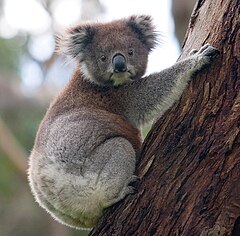
Although most of Australia is semi-arid or desert, it covers a diverse range of habitats, from alpine heaths to tropical rainforests. Because of the great age and consequent low levels of fertility of the continent, its extremely variable weather patterns, and its long-term geographic isolation, much of Australia's biota is unique and diverse. About 85% of flowering plants, 84% of mammals, more than 45% of birds, and 89% of in-shore, temperate-zone fish are endemic.[۱۴] Many of Australia's ecoregions, and the species within those regions, are threatened by human activities and introduced plant and animal species. The federal Environment Protection and Biodiversity Conservation Act 1999 is a legal framework used for the protection of threatened species. Numerous protected areas have been created to protect and preserve Australia's unique ecosystems, 64 wetlands are registered under the Ramsar Convention, and 16 World Heritage Sites have been established. Australia was ranked 13th in the World on the 2005 Environmental Sustainability Index.
Most Australian plant species are evergreen and many are adapted to fire and drought, including the eucalyptus and acacias. Australia has a rich variety of endemic legume species that thrive in nutrient-poor soils because of their symbiosis with Rhizobia bacteria and mycorrhizal fungi. Well-known Australian fauna include monotremes (the platypus and echidna); a host of marsupials, including the koala, kangaroo, wombat; and birds such as the emu, cockatoo, and kookaburra. The dingo was introduced by Austronesian people that traded with Indigenous Australians around 4000 BCE. Many plant and animal species became extinct soon after human settlement, including the Australian megafauna; many more have become extinct since European settlement, among them the Thylacine (Tasmanian Tiger).
اقتصاد
- آرنۍ ليکنه: Economy of Australia
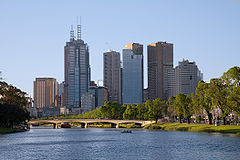
Australia has a prosperous, Western-style mixed economy, with a per capita GDP slightly higher than those of the UK, Germany and France. The country was ranked third in the United Nations' 2005 Human Development Index and sixth in The Economist worldwide quality-of-life index 2005. In recent years, the Australian economy has been resilient in the face of global economic downturn. Rising output in the domestic economy has been offsetting the global slump, and business and consumer confidence remains robust. Australia's emphasis on economic reform is often claimed to be key factor behind the economy's strength. In the 1980s, the Labor Party, led by Prime Minister Bob Hawke and Treasurer Paul Keating, started the process of economic reform by floating the Australian dollar in 1983, and deregulating the financial system.[۱۵] Since 1996, the Howard government has continued the process of micro-economic reform, including the partial deregulation of the labour market and the privatisation of state-owned businesses, most notably in the telecommunications industry.[۱۶] Substantial reform of the indirect tax system was implemented in July 2000 with the introduction of a 10% Goods and Services Tax, which has slightly reduced the heavy reliance on personal and company income tax that still characterises Australia's tax system.
The Australian economy has not suffered a recession since the early 1990s. As of January 2006, unemployment was 5.3% with 10,034,500 persons employed.[۱۷] The service sector of the economy, including tourism, education, and financial services, comprises 69% of GDP.[۱۸] Agriculture and natural-resources represent only 3% and 5% of GDP, respectively, but contribute substantially to Australia's export performance. Australia's largest export markets include Japan, China, the United States, South Korea and New Zealand.[۱۹] Areas of concern to some economists include the chronically high current account deficit and also high levels of net foreign debt.
Demographics
- آرنۍ ليکنه: Demographics of Australia
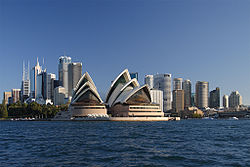
Most of the estimated 20.4 million Australians are descended from 19th- and 20th-century immigrants, the majority from Great Britain and Ireland. Australia's population has quadrupled since the end of World War I [۲۰], spurred by an ambitious immigration program. In 2001, the five largest groups of the 27.4% of Australians who were born overseas were from the United Kingdom, New Zealand, Italy, Vietnam and China.[13] Following the abolition of the White Australia policy in 1973, numerous government initiatives have been established to encourage and promote racial harmony based on a policy of multiculturalism[۲۱]. Australia’s population has increased by about 60 times since European settlement.
The self-declared indigenous population — including Torres Strait Islanders, who are of Melanesian descent — was 410,003 (2.2% of the total population) in 2001, a significant increase from the 1977 census, which showed an indigenous population of 115,953.[۲۲] Indigenous Australians have higher rates of imprisonment and unemployment, lower levels of education and life expectancies for males and females that are 17 years lower than those of other Australians.[13] Perceived racial inequality is an ongoing political and human rights issue for Australians.
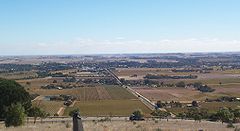
In common with many other developed countries, Australia is experiencing a demographic shift towards an older population, with more retirees and fewer people of working age. A large number of Australians (759,849 for the period 2002–03[۲۳]) live outside their home country. Australia has maintained one of the most active immigration programs in the world to boost population growth. Most immigrants are skilled; the quota includes categories for family members and refugees.
English is the official language,[۲۴] and is spoken and written in a distinct variety known as Australian English. According to the 2001 census, English is the only language spoken in the home for around 80% of the population. The next most common languages spoken at home are Chinese (2.1%), Italian (1.9%) and Greek (1.4%). A considerable proportion of first- and second-generation migrants are bilingual. It is believed that there were between 200 and 300 Australian Aboriginal languages at the time of first European contact. Only about 70 of these languages have survived, and all but 20 of these are now endangered. An indigenous language remains the main language for about 50,000 (0.02%) people. Australia has a sign language known as Auslan, which is the main language of about 6,500 deaf people.
Australia has no state religion. The 2001 census identified that 68% of Australians call themselves Christian: 27% identifying themselves as Roman Catholic and 21% as Anglican. Australians that identify themselves as followers of non-Christian religions number 5%. A total of 16% were categorised as having "No Religion" (which includes non theistic beliefs such as Humanism, atheism, agnosticism and rationalism) and a further 12% declined to answer or did not give a response adequate for interpretation. As in many Western countries, the level of active participation in church worship is much lower than this; weekly attendance at church services is about 1.5 million, about 7.5% of the population.[۲۵]
School attendance is compulsory throughout Australia between the ages of 6–15 years (16 years in South Australia and Tasmania), contributing to an adult literacy rate that is assumed to be 99%. Government grants have supported the establishment of Australia's 38 universities, and although several private universities have been established, the majority receive government funding. There is a state-based system of vocational training colleges, known as TAFE Institutes, and many trades conduct apprenticeships for training new tradespeople. Approximately 58% of Australians between the ages of 25 and 64 have vocational or tertiary qualifications.[13]
کلتور/فرهڼ
- آرنۍ ليکنه: Culture of Australia
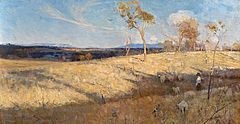
The primary basis of Australian culture up until the mid-20th century was Anglo-Celtic, although distinctive Australian features had been evolving from the environment and indigenous culture. Over the past 50 years, Australian culture has been strongly influenced by American popular culture (particularly television and cinema), large-scale immigration from non-English-speaking countries, and Australia's Asian neighbours. The vigour and originality of the arts in Australia—films, opera, music, painting, theater, dance, and crafts—are achieving international recognition.
Australia has a long history of visual arts, starting with the cave and bark paintings of its indigenous peoples. From the time of European settlement, a common theme in Australian art has been the Australian landscape, seen in the works of Arthur Streeton, Arthur Boyd and Albert Namatjira, among others. The traditions of indigenous Australians are largely transmitted orally and are closely tied to ceremony and the telling of the stories of the Dreamtime. Australian Aboriginal music, dance and art have a palpable influence on contemporary Australian visual and performing arts. Australia has an active tradition of music, ballet and theatre; many of its performing arts companies receive public funding through the federal government's Australia Council. There is a symphony orchestra in each capital city, and a national opera company, Opera Australia, first made prominent by the renowned diva Dame Joan Sutherland; Australian music includes classical, jazz, and many popular music genres.
Australian literature has also been influenced by the landscape; the works of writers such as Banjo Paterson and Henry Lawson captured the experience of the Australian bush. The character of colonial Australia, as embodied in early literature, resonates with modern Australia and its perceived emphasis on egalitarianism, mateship, and anti-authoritarianism. In 1973, Patrick White was awarded the Nobel Prize in Literature, the only Australian to have achieved this; he is recognised as one of the great English-language writers of the 20th century. Australian English is a major variety of the language; its grammar and spelling are largely based on those of British English, overlaid with a rich vernacular of unique lexical items and phrases, some of which have found their way into standard English.
Australia has two public broadcasters (the ABC and SBS), three commercial television networks, three pay TV services, and numerous public, non-profit television and radio stations. Australia's film industry has achieved critical and commercial successes. Each major city has daily newspapers, and there are two national daily newspapers, The Australian and The Australian Financial Review. According to Reporters Without Borders in 2005, Australia is in 31st position on a list of countries ranked by press freedom, behind New Zealand (9th) and the United Kingdom (28th) but ahead of the United States. This ranking is primarily due to the limited diversity of commercial media ownership in Australia. Most Australian print media in particular is under the control of either News Corporation or John Fairfax Holdings.

Sport is an important part of Australian culture, assisted by a climate that favours outdoor activities; 23.5% Australians over the age of 15 regularly participate in organised sporting activities[13]. At an international level, Australia has particularly strong teams in cricket, hockey, netball, rugby league, rugby union, and performs well in cycling and swimming. Australia has participated in every summer Olympic Games of the modern era, and every Commonwealth Games. Australia has hosted the 1956 and 2000 Summer Olympics, and has ranked among the top five medal-takers since 2000. In 2004, it collected 49 Olympic medals (17 gold, 16 silver and 16 bronze). Australia has also hosted the 1938, 1962 and 1982 Commonwealth Games, and will host the 2006 Commonwealth Games in Melbourne. Australian rules football is the most popular national sport; players gain some international prominence through International Rules which is an annual meeting between the Australian code and Irish Gaelic Football. However, Rugby League is more popular than Australian Rules in New South Wales and Queensland. The Australian Open is one of the four Grand Slam tennis tournaments, held in Melbourne each January. The F1 Australian Grand Prix is also held in Melbourne, usually towards the end of March each year. Corporate and government sponsorship of many sports and élite athletes is common in Australia.
Televised sport is popular; some of the highest rating television programs include the summer Olympic Games and the grand finals of local and international football competitions.[۲۶]
دا هم وګورۍ
کينډۍ:د آسټراليا اړونده سرليکونه
سرچينې
- ^ Sidney J. Baker, The Australian Language, second edition, 1966.
- ^ Gillespie, R. (2002). Dating the first Australians. Radiocarbon 44:455-472
- ^ Smith, L. (1980), The Aboriginal Population of Australia, Australian National University Press, Canberra
- ^ Tatz, C. (1999). Genocide in Australia, AIATSIS Research Discussion Papers No 8, Australian Institute of Aboriginal and Torres Strait Islander Studies, Canberra
- ^ Windschuttle, K. (2001). The Fabrication of Aboriginal History, The New Criterion Vol. 20, No. 1, September 20.
- ^ Sheehan, P. (2002). Our history, not rewritten but put right, The Sydney Morning Herald, November 25.
- ^ Bean, C. Ed. (1941). Volume I - The Story of Anzac: the first phase, First World War Official Histories 11th Edition.
- ^ Australian Electoral Commission (2000). 1999 Referendum Reports and Statistics
- ^ Parliamentary Library (1997). The Reserve Powers of the Governor-General
- ^ a Australian Government. (2005). Budget 2005-2006
- ^ Department of the Environment and Heritage. About Biodiversity
- ^ Macfarlane, I. J. (1998). Australian Monetary Policy in the Last Quarter of the Twentieth Century. Reserve Bank of Australia Bulletin, October
- ^ Parham, D. (2002). Microeconomic reforms and the revival in Australia’s growth in productivity and living standards. Conference of Economists, Adelaide, 1 October
- ^ Australian Bureau of Statistics. Labour Force Australia. Cat#6202
- ^ a b c d Australian Bureau of Statistics. Year Book Australia 2005
- ^ Department of Foreign Affairs and Trade (2003). Advancing the National Interest, Appenidix 1
- ^ Australian Bureau of Statistics, Population Growth - Australia’s Population Growth
- ^ Department of Immigration, Multicultural and Indigenous Affiars. (2005). The Evolution of Australia's Multicultural Policy
- ^ Australian Bureau of Statistics. 2001 Census, A Snapshot of Australia
- ^ Parliament of Australia, Senate (2005). Inquiry into Australian Expatriates
- ^ Department of Immigration, Multicultural and Indigenous Affiars. (1995). Pluralist Nations: Pluralist Language Policies?
- ^ NCLS releases latest estimates of church attendance, National Church Life Survey, Media release, 28 February 2004
- ^ Australian Film Commission. What are Australians Watching?, Free-to-Air, 1999-2004 TV
باندنۍ تړنې
<left>
</left>
- Wikitravel guide to Australia
- Australian Government Entry Portal
- Commonwealth Government Online
- Department of Immigration and Multicultural and Indigenous Affairs (DIMIA)
- Department of Foreign Affairs and Trade (DFAT): Country Information
- Satellite images of Australia (Google Maps)
- National Library of Australia
- National Museum of Australia
- Official Australia Tourism Website
- Bureau of Meteorology
- Official website of the Melbourne 2006 Commonwealth Games
کينډۍ:Continent کينډۍ:Pacific Islands
- ↑ "Demonyms – Names of Nationalities". about.com. د لاسرسينېټه ۲۳ جولای ۲۰۰۸. الوسيط
|CitationClass=تم تجاهله (مساعدة) - ↑ "Demonyms, or what do you call a person from ..." The Geography Site. د لاسرسينېټه ۲۵ جولای ۲۰۰۸. الوسيط
|CitationClass=تم تجاهله (مساعدة) - ↑ کينډۍ:Census 2006 AUS
- ↑ ۴٫۰ ۴٫۱ ۴٫۲ ۴٫۳ "Australia". International Monetary Fund. د لاسرسينېټه ۰۱ اکتوبر ۲۰۰۹. الوسيط
|CitationClass=تم تجاهله (مساعدة) - ↑ Human Development Report 2009. The United Nations. Retrieved 5 October 2009.



